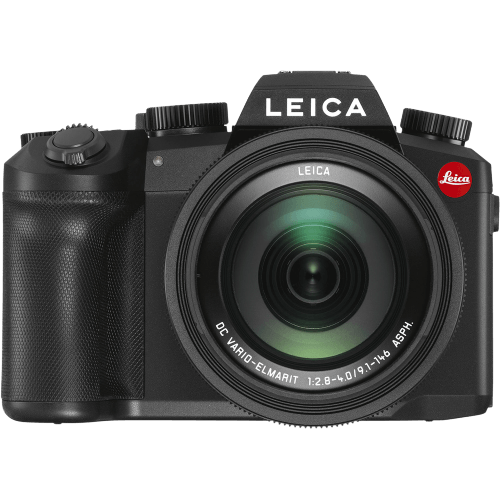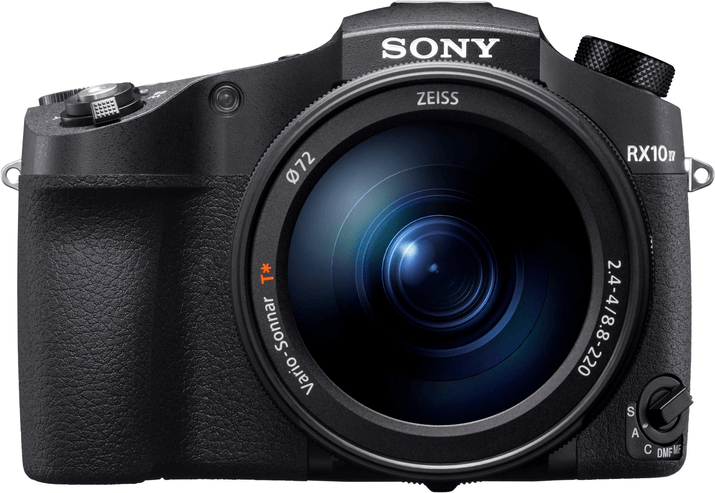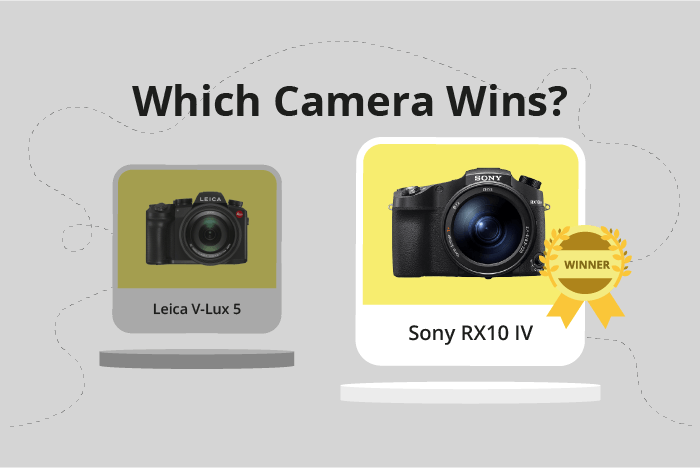Leica V-Lux 5 vs Sony Cyber-shot RX10 IV Comparison
Leica V-Lux 5

Sony Cyber-shot RX10 IV

The Sony Cyber-shot RX10 IV outperforms the Leica V-Lux 5 with a score of 70/100 compared to 64/100. Both cameras share common specifications as they are bridge-type cameras released in 2017 and 2019, respectively. Their launch prices were $1699 for the Sony and $1550 for the Leica, making the Sony slightly more expensive.
The Sony Cyber-shot RX10 IV has advantages in size and weight, measuring 133 x 94 x 145mm and weighing 1095g, making it more compact and heavier than the Leica V-Lux 5, which measures 137 x 97 x 132mm and weighs 812g. This additional weight on the Sony camera may provide better stability during shooting.
On the other hand, the Leica V-Lux 5 is lighter and slightly larger, making it easier to handle and carry around for extended periods. Despite the lower score, the Leica V-Lux 5 still holds its own in terms of portability and convenience.
Taking these factors into account, the Sony Cyber-shot RX10 IV is the superior camera, with its higher score reflecting its overall better performance. However, the Leica V-Lux 5 remains a viable option for those prioritizing weight and size.
Leica V-Lux 5 vs Sony Cyber-shot RX10 IV Overview and Optics
The Sony Cyber-shot RX10 IV outperforms the Leica V-Lux 5 in optics with a score of 68/100 compared to the V-Lux 5’s 64/100. Both cameras share several key specifications, such as 20-megapixel resolution, CMOS sensor type, 1″ sensor size, fixed lens mount, and image stabilization.
The RX10 IV has a higher shooting speed of 24 compared to the V-Lux 5’s 12, making it more suitable for capturing fast-moving subjects. Additionally, the RX10 IV features a Bionz X processor, which contributes to its enhanced performance. The sensor quality of the RX10 IV is also superior, as evidenced by its DXOMARK score of 82 compared to the V-Lux 5’s 72.
On the other hand, the Leica V-Lux 5 still offers decent performance in its optics, as its score of 64/100 indicates. While it may not be as fast as the RX10 IV in terms of shooting speed, it still provides reliable image quality with its 20-megapixel resolution and CMOS sensor.
In terms of optics, the Sony Cyber-shot RX10 IV is the better choice due to its higher score, faster shooting speed, and superior sensor quality. However, the Leica V-Lux 5 remains a competent option for those who prioritize image quality and stabilization, while not requiring the higher shooting speed of the RX10 IV.
Leica V-Lux 5 vs Sony Cyber-shot RX10 IV Video Performance
The Sony Cyber-shot RX10 IV outperforms the Leica V-Lux 5 in video capabilities, scoring 77/100 compared to the V-Lux 5’s score of 69/100. Both cameras share some common specifications, such as 4K video resolution and maximum video dimensions of 3840 x 2160 pixels. Neither camera has built-in time-lapse functionality.
The RX10 IV’s superior performance is largely due to its higher maximum video frame rate of 120fps, which is double that of the V-Lux 5’s 60fps. This allows for smoother and more detailed slow-motion video capture, providing greater creative flexibility to users. The higher frame rate makes the RX10 IV a better choice for those looking to capture fast-moving subjects or create cinematic slow-motion footage.
While the V-Lux 5 has a lower video score and frame rate, it still offers 4K video resolution and solid video performance for most users. Its video capabilities may be sufficient for casual videographers and those not requiring advanced slow-motion features.
When comparing the video capabilities of these two cameras, the Sony Cyber-shot RX10 IV takes the lead with its higher video score and superior frame rate. This makes it a more suitable choice for users seeking advanced video features and smooth slow-motion capture. On the other hand, the Leica V-Lux 5 remains a viable option for those who prioritize 4K video resolution and do not require the additional benefits offered by the RX10 IV’s higher frame rate.
Leica V-Lux 5 vs Sony Cyber-shot RX10 IV Features and Benefits
The Sony Cyber-shot RX10 IV outperforms the Leica V-Lux 5 in features, scoring 83/100 compared to the Leica’s 70/100. Both cameras share several specifications, such as a 3-inch screen size, touchscreen capabilities, flip screen, and the absence of GPS. Additionally, both cameras are equipped with WiFi and Bluetooth connectivity.
The Sony RX10 IV has a higher screen resolution of 1,440,000 dots, compared to the Leica V-Lux 5’s 1,240,000 dots. This higher resolution provides the Sony RX10 IV with a sharper and clearer image display, making it easier for users to review images and navigate menus. This advantage contributes to the Sony’s higher feature score.
Although the Leica V-Lux 5 has a lower feature score, it still offers a quality experience with its touchscreen, flip screen, and connectivity options. However, it falls short in comparison to the Sony RX10 IV’s screen resolution. If screen resolution is not a primary concern, the Leica V-Lux 5 remains a viable option for users seeking a camera with similar features.
Considering the comparison, the Sony Cyber-shot RX10 IV offers superior features, particularly in screen resolution, which results in a higher score. The Leica V-Lux 5, while not as strong in features, remains a decent choice for users who prioritize other aspects of a camera. In the end, the decision between these two cameras depends on individual preferences and priorities.
Leica V-Lux 5 vs Sony Cyber-shot RX10 IV Storage and Battery
The Sony Cyber-shot RX10 IV outperforms the Leica V-Lux 5 in storage and battery, scoring 37/100 compared to the Leica’s 35/100. Both cameras have one memory card slot and accept SD, SDHC, and SDXC cards. They also both offer the convenience of USB charging.
The RX10 IV has a longer battery life, providing 400 shots per charge compared to the V-Lux 5’s 360 shots. This gives the Sony an advantage for extended shooting sessions or when a power source is not readily available. The Leica V-Lux 5, however, does not have any advantages in this category.
Despite the Sony’s slightly higher score, the difference between the two cameras is minimal. Both cameras have similar storage capabilities and USB charging, with the Sony having a marginally longer battery life. The choice between the two ultimately depends on the user’s preferences and priorities.
Leica V-Lux 5 vs Sony Cyber-shot RX10 IV – Our Verdict
Are you still undecided about which camera is right for you? Have a look at these popular comparisons that feature the Leica V-Lux 5 or the Sony Cyber-shot RX10 IV:
- Nikon Coolpix P1000 vs Sony Cyber-shot RX10 IV
- Sony Cyber-shot DSC-RX10 III vs Cyber-shot RX10 IV
- Panasonic Lumix DMC-FZ2000 / FZ2500 vs Sony Cyber-shot RX10 IV
- Nikon Z50 vs Sony Cyber-shot RX10 IV
- Panasonic Lumix DMC-FZ1000 II vs Sony Cyber-shot RX10 IV
- Sony Cyber-shot DSC-RX100 VII vs Cyber-shot RX10 IV

